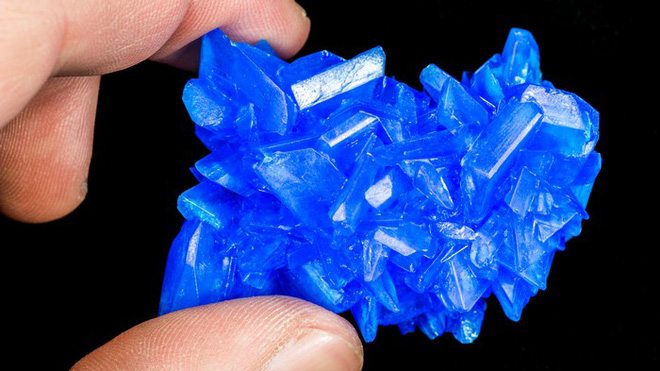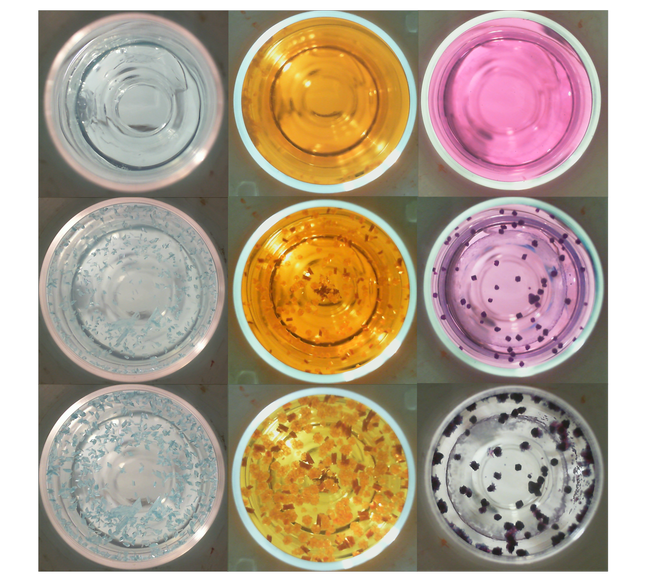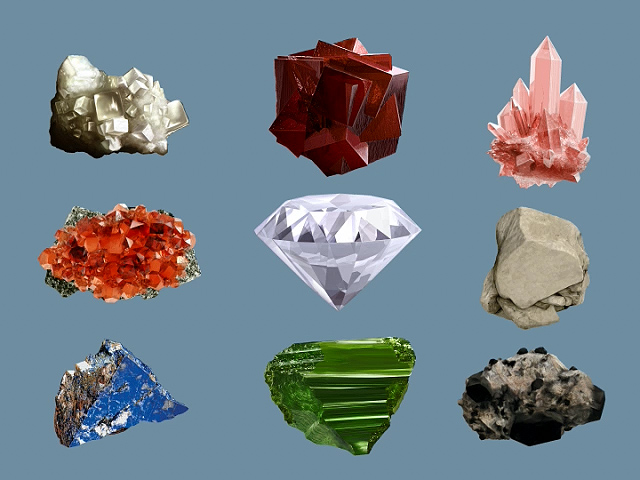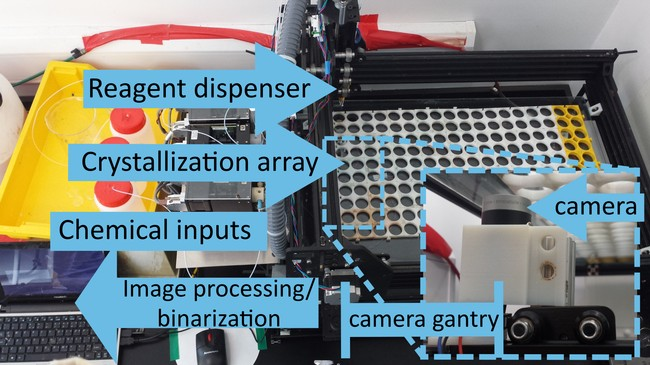In the future, scientists will use crystals to encode information
This mathematical study shows that when a person chooses two consecutive numbers at random, the second number will often be related to the previous number, showing that the odds of picking two truly random numbers are very low. But don't be sad, computers don't actually generate a truly random number either.

A crystal is formed through chemical reactions.
Generating a sequence of random numbers is important in mathematical modeling and information coding; Random numbers play a big part in ensuring the safest surfing possible. Typically, scientists and coders will rely on natural phenomena such as nuclear decay and airborne sounds to create randomness in their number sequence.
But the future will be different: for the first time, chemists can use another random source, based on the chemical properties of matter. The scientists built a robotic system that uses crystallization to generate random number sequences and encode information. They have just published their research results in the scientific journal Matter.
" We coded the word 'crytal!' thanks to its number generator in parallel with an algorithm well known , "said Lee Cronin, lead author of the study and a professor of chemistry at the University of Glasgow. " We find that our information is encrypted using a completely random sequence of numbers that is harder to solve than conventional algorithms, because our computer systems can guess the algorithm and attack the information. over there . "
Here's how it works: under the right conditions, chemicals in a heterogeneous liquid can combine to form a homogeneous and concentrated shape like crystal particles. This process involves a lot of random elements, from time to shape of the crystals.

The three different chemical reactions that Cronin used
Cronin and his colleagues designed a simple robot that can see the array of crystallization chambers through a webcam and convert those elements into a sequence of zeroes and zeroes. The researchers looked at the three. Various transformation processes and compare the encoding string for the word "crystal!" This is with Mersene Twister, a random number generator through algorithms. Unlike the usual algorithms used, the number strings generated by these crystals are much harder to decipher.
This method shows a new and changeable way for natural sequence generators now, and according to Cronin, his system even has some advantages, such as the endless reuse potential.

There are countless types of crystals with countless different reactions - this will make it easier to generate a random number.
Cronin also compared it to a chemical used specifically to warm hands - which works by crystallization. After the device reduces the temperature when the reaction is completed, it can be heated in warm water to disintegrate the crystals created so that they can be reused.
Cronin says that in the upcoming experiments, he wants to increase "chaos" by adding other chemical reactions before starting the crystallization process. Theoretically, a hacker could create the same reaction that could speed up the decoding process created by Cronin's robot; "The more random a system is, the harder it is to decode, " he said.
" This project was created to be able to constitute a completely randomized process, method and crystallization, creating a perfect sequence of numbers for coding, " concludes Cronin.

Cronin machine diagram
In a research report, Cronin and his co-authors showed that they can also make a mini-version of the robot that can be put into regular computers, enabling the ability to access a computer. randomization process through this crystallization process. He even emphasized that this would be a more cost-effective method using quantum computing - the gold standard for constructing random series of numbers.
Although designed for this project, Cronin also said that his robot could help in many other projects such as developing medicine, detecting banned substances or developing new types of batteries.
" Chemistry is a broad category, we can develop in many different ways, " according to Cronin.
According to VICE
You should read it
- Top 20 best encryption software for Windows
- 8 mysterious natural phenomena that make scientists 'crazy'
- A series of amazing natural phenomena that you cannot see every day, or never in your life
- 8 mysterious natural phenomena cannot be explained by science
- Information security test has the answer P3
- Things to know about an information system security manager
 Discovered 'hidden bomb' in the soil: industrial chemicals have the ability to affect the immune system and fertility in humans
Discovered 'hidden bomb' in the soil: industrial chemicals have the ability to affect the immune system and fertility in humans Learn about the capabilities of Avenger called Hyperion - the Marvel version of Superman
Learn about the capabilities of Avenger called Hyperion - the Marvel version of Superman Before 'returning to Thanos', what was the fate and appearance of Nebula in the comics?
Before 'returning to Thanos', what was the fate and appearance of Nebula in the comics? Marvel Comics introduces 'vampire superman': Idol Cap but only vandalism is good
Marvel Comics introduces 'vampire superman': Idol Cap but only vandalism is good Science warns: 70-90% of corals will disappear in the next 20 years, and become extinct in 80 years
Science warns: 70-90% of corals will disappear in the next 20 years, and become extinct in 80 years Science has found evidence of the immortality of pseudo-particles: they replicate themselves after decay
Science has found evidence of the immortality of pseudo-particles: they replicate themselves after decay